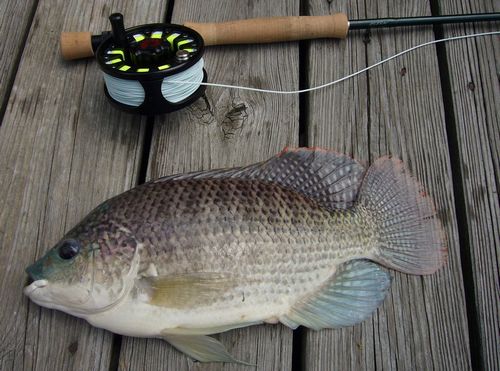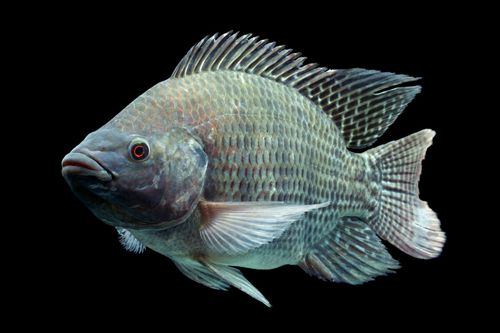What Is Tilapia?

Tilapia, as its name implies, are small fish that can grow to be as long as twelve inches, and although they do not reach the length of the full-grown catfish or the shark, they are definitely no slouch when it comes to size! Tilapia has been an extremely popular choice for the many varieties of fish that one can keep in aquariums and freshwater tanks, and although they tend to require slightly more care than their larger counterparts, they are certainly worth the extra attention.
Tilapia is actually the generic name for at least a hundred different species of freshwater cichlid fishes from the coptocyanine (coptophyl), coelotrilpine (coelotril) and coptodontine (coptodontino) families, all of which are placed into the same family of fish. All of the tilapia types mentioned above belong to the genus Cichlopsis, although there are some that are placed under the genera Cichlasobia and Cichlasotris. The family of coated fishes includes two sub-families: Coptidae (also called “coptids”) and Cichlidae (also known as “cichlids”).
The genus Cichlasobia is a sub-order of the family Tetraodontiformes, which also contains the groups Diplocarpia and Cephalopoda. Members of this sub-order are the rainbow trout (Clupea sp., C. albicans, C. albula), rainbow trout (C. stellata, C. chrisetica, C. stansburgeri), rainbow trout (C. michaelli), blue-spotted shiner (C. cinera, C. cinnamomilla), bighead trout (C. cristatus), longshanks (C. hirsuta), shortshanks (C. pachyderma) and flathead trout (C. flavipes). Members of this sub-order are placed under the subgenus Tuna in the fish genus Cichlidae.
Members of the sub-family Cephalopoda are grouped under the suborder Teleosteichthyoid, which includes the cichlids. Members of the sub-family Teleosteichthyoid belong to three subgenera, which are Teleosteichthyoidina, Teleosteichthyroidinae, and Teleosteichthyroid. All members of this sub-order belong to the Teleosteichthyroid family are carnivorous. Teleosteichthyroid fishes are placed under the genus Cichlidae.
Teleosteichthyroid fishes belong to the suborder Teleosteichthyes. Members of this suborder are commonly found in fresh and saltwater environments. These fishes generally occur in rivers and streams in tropical regions and subtropical seas, but they are also frequently seen in lakes and oceans and even brackish water.
Teleosteichthyroid fishes belong to the subfamily Teleosteichthyroidinae. Members of this subfamily have a variety of features, including scales. They are also known to grow very large. The coloration of this sub-order is usually light brown with black markings and spots, and the scales are often marked with brown spots or lines. The gill covers may be spotted.
Members of the suborder Teleosteichthyroide are called tilapia fish. Tilapia belongs to the suborder Cichlidae. It belongs to the family Cichlidae and its scientific name, Teleosteichthyoidas, is derived from the Greek words tells meaning “water” and ethos meaning “fish”. The common names Tilapia spp. are derived from Greek words meaning “water lily”sea lilies” respectively.
Tuna fish and Tilapia are both fish, and they are closely related but not completely the same. Tuna are often considered as an aquatic species, and Tilapia belong to the terrestrial group. of teleosteichthyoids.

Tuna are larger than Tilapia. Most fish varieties belong to a certain group, but Tilapia belong to an entirely separate group.
Tilapia is commonly seen in freshwater habitats. They are usually found in streams, lakes, or rivers. When it comes to size, Tilapia can reach up to ten inches in length, and that is if they are of medium size. At times, they can even exceed one and a half feet long. The males of this species are slightly smaller than the females.
Teleosteichthyroid fishes are carnivores and eat fish and squid. Squid, on the other hand, are omnivores. of which they can eat a lot. Squid usually belong to the crustaceans, mollusks, snails, worms, and other crustaceans. orans. Tuna fish prefer to feed on fish and other squid but occasionally, they will feed on shrimp. snails and other crustaceans.
Teleosteichthyroid fishes live underwater, in bodies of water where they can easily reach their prey. Although it is true that these fish can be found in fresh water, most of them prefer to stay in bodies of water where water is warm, with abundant food. They usually eat fish and squid. They do not require fish oil to maintain their healthy health. They can tolerate the presence of some algae and filter oxygen in the water.
Teleosteichthyroid fishes are not able to absorb protein efficiently, so they need to eat meaty fish that contain more protein. Their diet should include meaty fishes such as bass, shark, catfish, shad, and mussels.